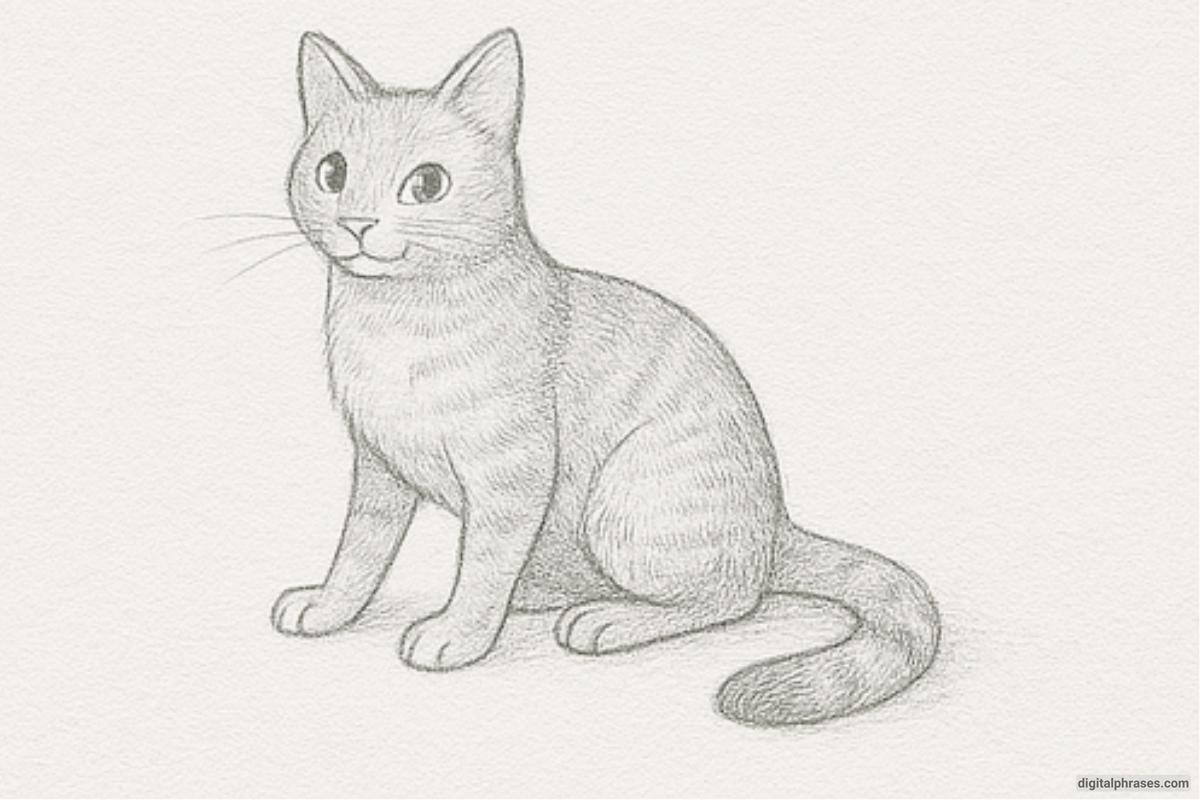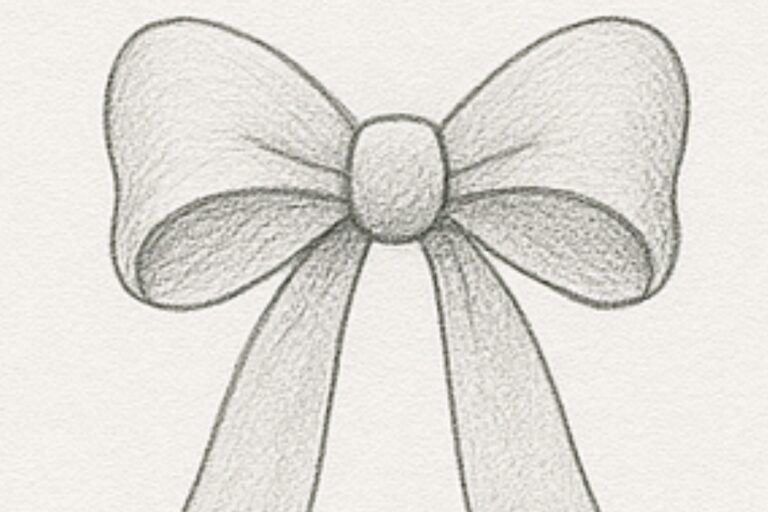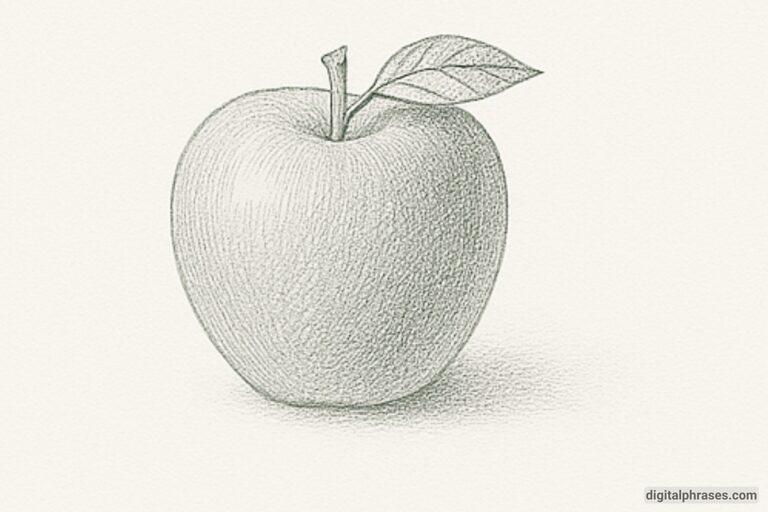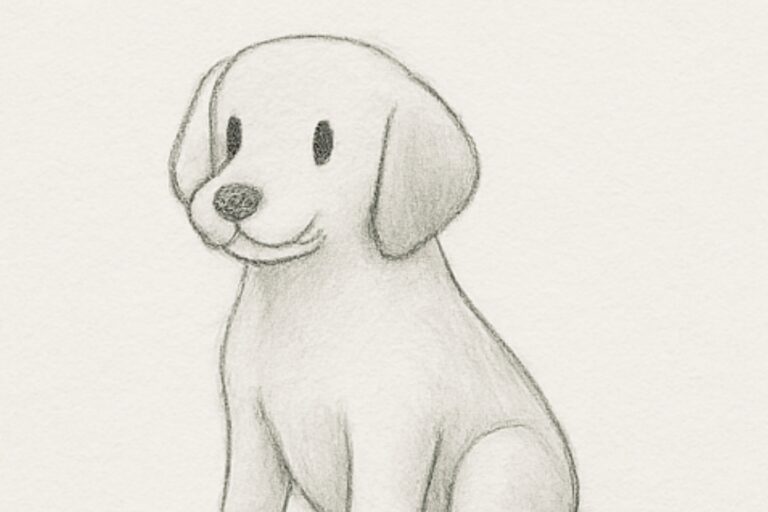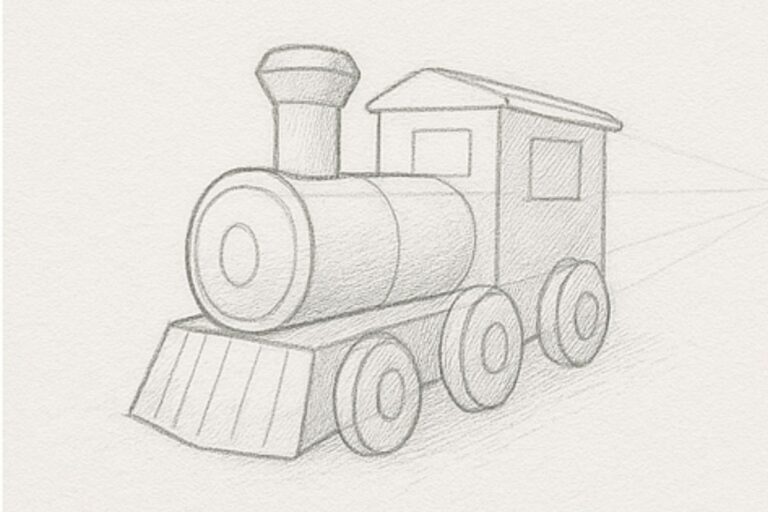How To Draw a Cat
Here is a step-by-step guide on how to draw a cat.
Step 1 – Sketch the Basic Structure
- Start by drawing two circles: one for the head (smaller) and one for the body (larger). These should be proportionally placed to create the base form.
- Connect the circles using soft lines to establish the cat’s neck and back curvature.
- Draw four simple lines for the limbs, indicating the placement of the front and back legs. Add small oval shapes at the end of the lines to represent the paws.
- This rough framework will serve as the skeleton for your cat drawing.
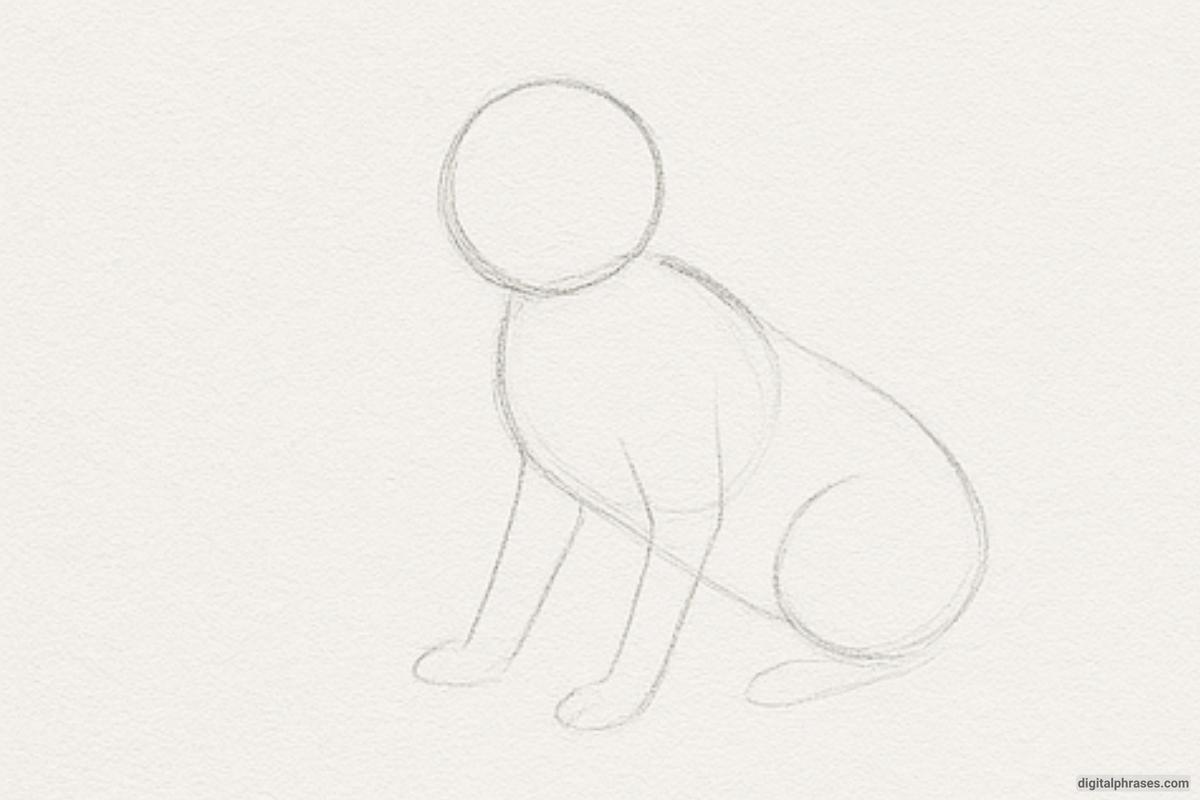
Step 2 – Define the Cat’s Silhouette
- Refine the shapes of the limbs and body. Instead of stick lines, add thickness to give the limbs volume and natural flow.
- Sketch the tail extending smoothly from the rear part of the body using a gentle curve.
- Begin to shape the head by adding two large triangular ears on top and smoothing the edges of the initial head circle.
- Clean up overlapping lines and unnecessary guides from Step 1 to maintain clarity in the shape.

Step 3 – Add Facial Features and Details
- Draw almond-shaped eyes symmetrically on the cat’s face, just below the center of the head.
- Add a small triangle for the nose and lightly curve lines for the mouth, forming a subtle expression.
- Outline the inner ear details and add gentle curves to show cheek and jaw definition.
- Begin detailing the paws by adding slight bumps for toes.
- Introduce light fur texture by sketching faint lines along the neck and body, helping the drawing begin to feel more lifelike.
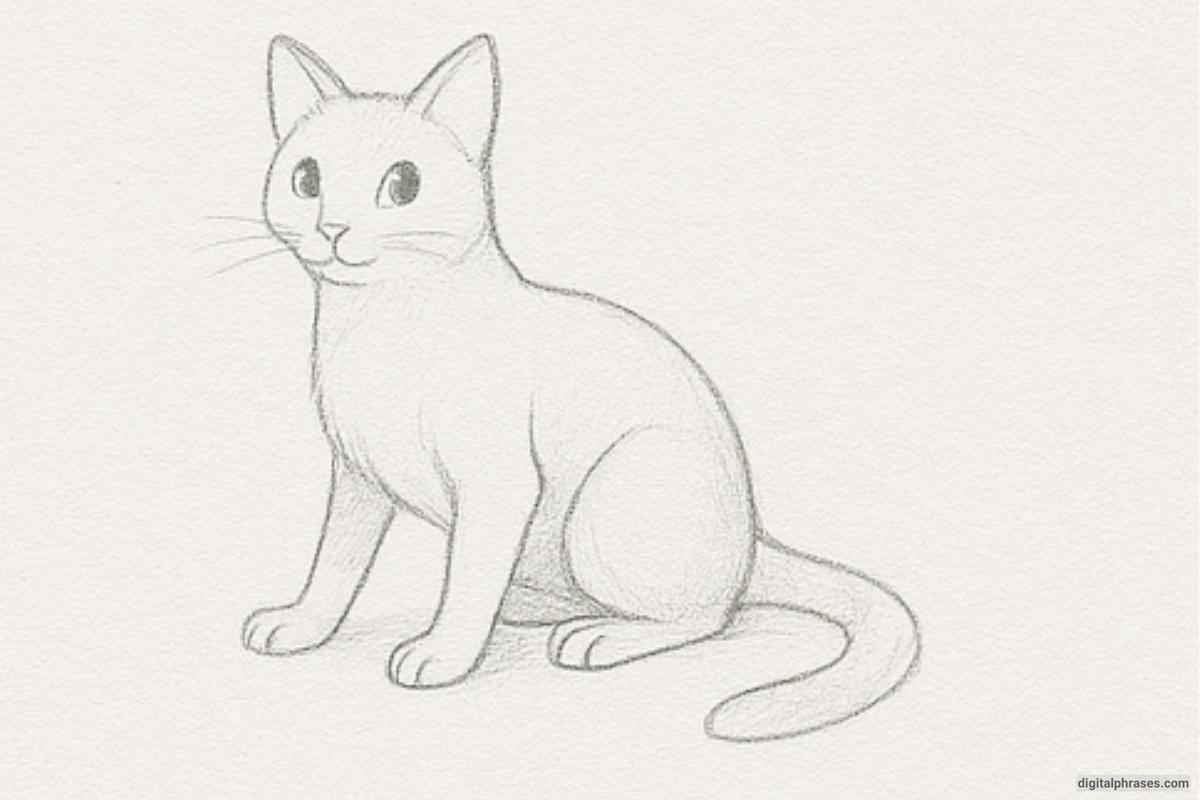
Step 4 – Finalize with Shading and Texture
- Deepen the outlines and reinforce the defining edges of the cat’s body, especially around the legs, tail, and face.
- Add shading to give the drawing depth. Focus on shadowed areas like under the chin, behind the legs, and beneath the belly.
- Refine the eyes with pupils and slight highlights for realism. You may also lightly shade around them to enhance their shape.
- Add fur texture throughout the body using short, controlled pencil strokes. Pay special attention to direction — fur should follow the natural flow of the cat’s body.
- Finish by detailing the tail with gentle striping or shading, and ensure the paws and claws are subtly indicated.
